|
Pointed Twill Blocks |
Marcy Petrini
October, 2024
After working through the tie-up and treadling steps for two twill blocks, I decided to use the warp still on the loom for some more experimenting. I wrote about these two twills block, false satin and turned twills, in the August and September blogs.
Looking at the twill block chapter in Strickler’s book, I was struck by how many of the blocks had treadlings that didn’t produce blocks, rather stripes. Others are intricate blocks, and some others are color and weave effect. They are all very interesting, but I wanted to go back to basics.
I thought I would try the next logical step, the pointed twill.
Strickler describes the threading process for twill blocks as using two repeats of a four-shaft twill, first on shafts 1 through 4, then on shafts 5 through 8. I decided to try that with the same tie-up as the turned twill blocks and a “tromp-as-writ” treadling.
Here is the starting drawdown.
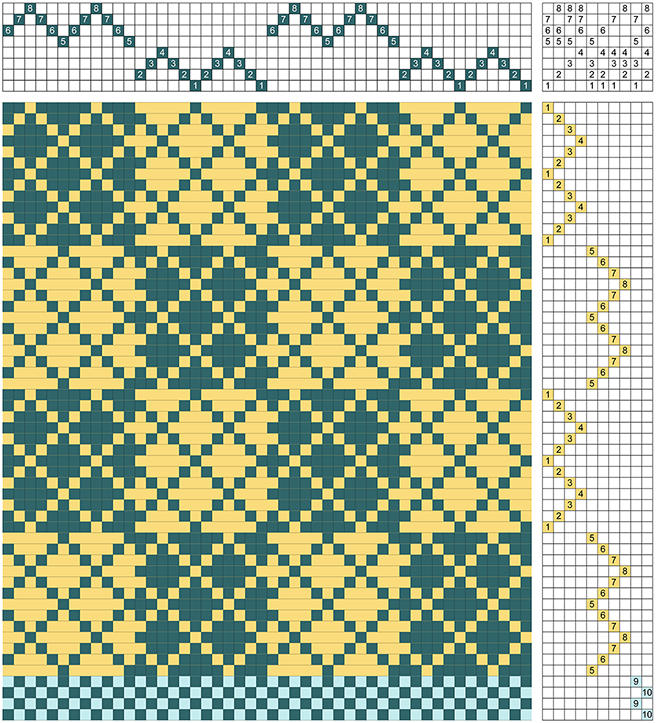
I made two decisions. The first is that I didn’t balance the threading because I wanted to maintain plain weave across the width of the fabric, as visible from the drawdown. That is not necessary and starting with a balanced threading for the two repeats on the two sets of shafts would result in different motifs.
My second decision was to start the treadling steps as “tromp as writ” but balanced, because I wanted the top and bottom of the blocks to be mirror images.
When I design motifs as I did here, I may change the threading or the treadling steps. The latter may be changed in the tie-up or in the sequence of activating the treadles. In my case, I threaded the loom first, so my only choice was to change the motif looks by changing the treadling steps.
I noticed that there were several places where the motifs were not symmetrical within the block. These are circled below in the partial drawdown of the right corner.
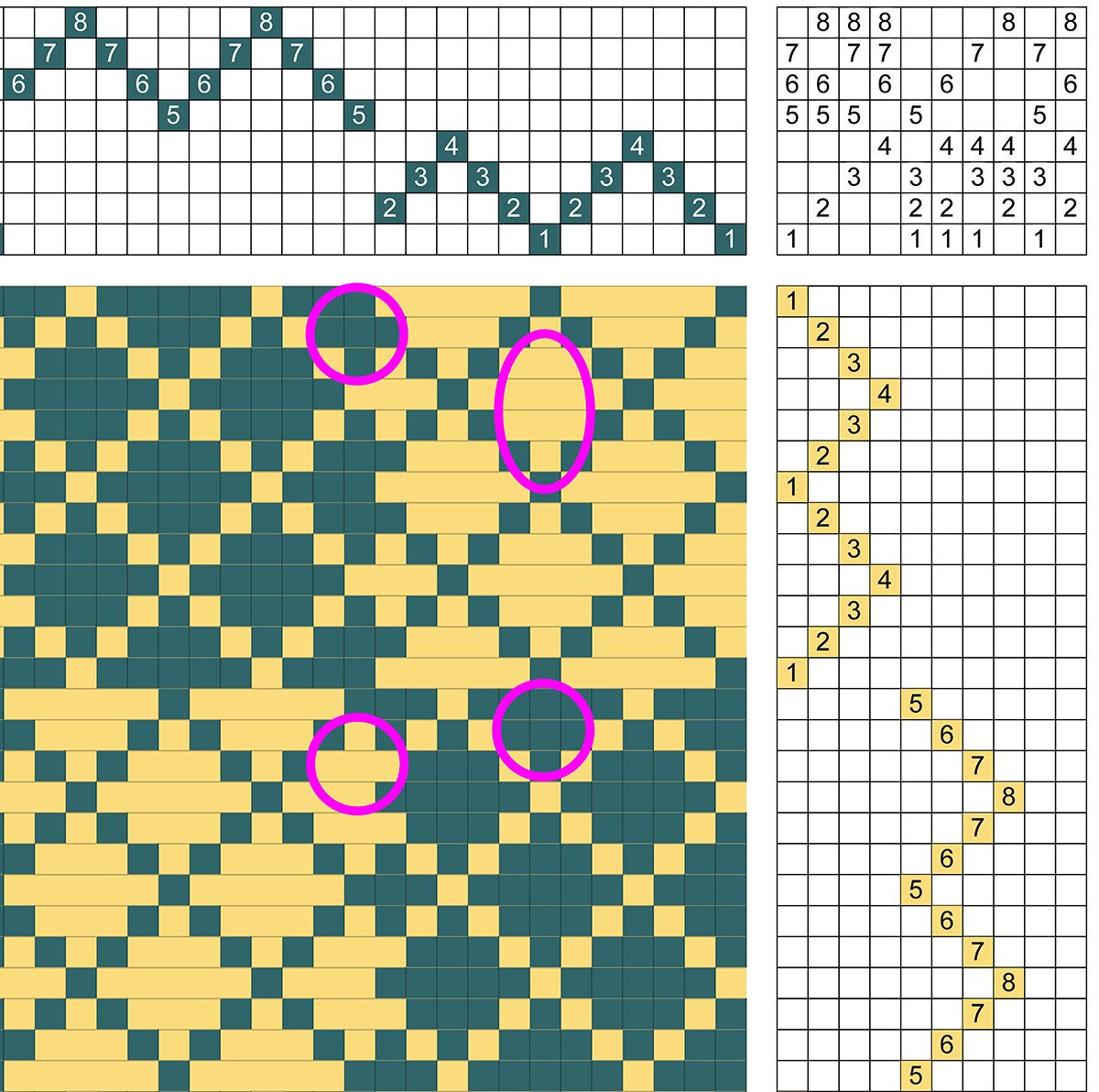
I looked at each one of the places where the motifs were not symmetrical left to right. For each, I looked at which shaft on which treadle was causing the asymmetry or which shaft added to a treadle would result in symmetry.
For example, looking at the top right of the warp-faced block on shafts 5 through 8 (circled above), I saw that shaft 5 on treadle 2 was causing that right corner not to be matched to the left corner. Removing shaft 5 from treadle 2 solved the asymmetry.
There were three other places that I changed: a) add shaft 1 to treadle 3; b) remove shaft 1 from treadle 7; c) add shaft 5 to treadle 7.
The two tie-ups are below for comparison, with the changes highlighted. The original on the left, the final on the right.
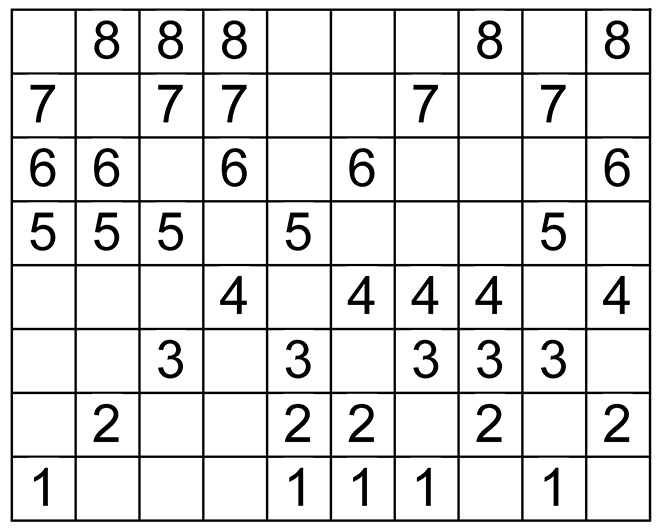 |
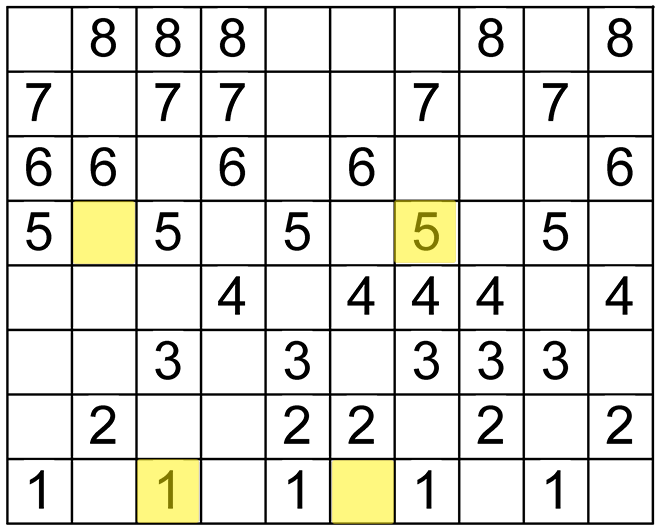 |
Below is the final drawdown
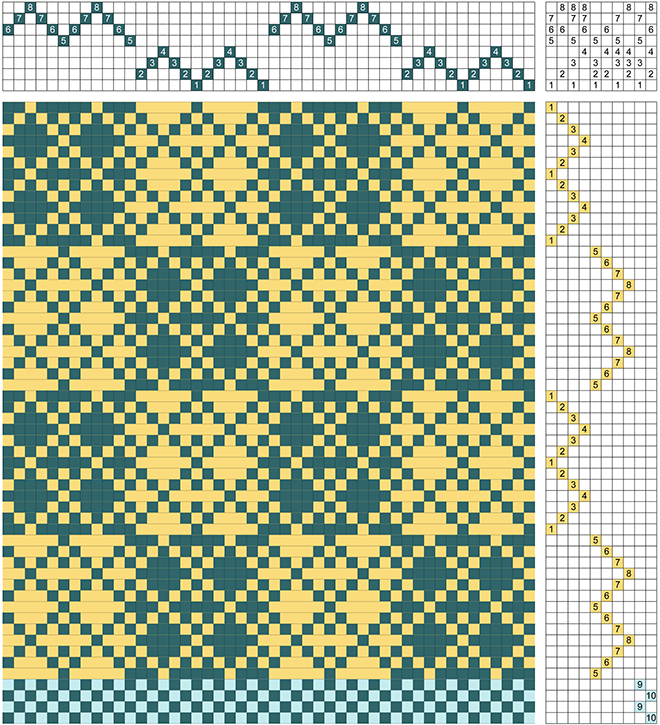
Here are the samples, front and back woven from the drawdown above.
 |
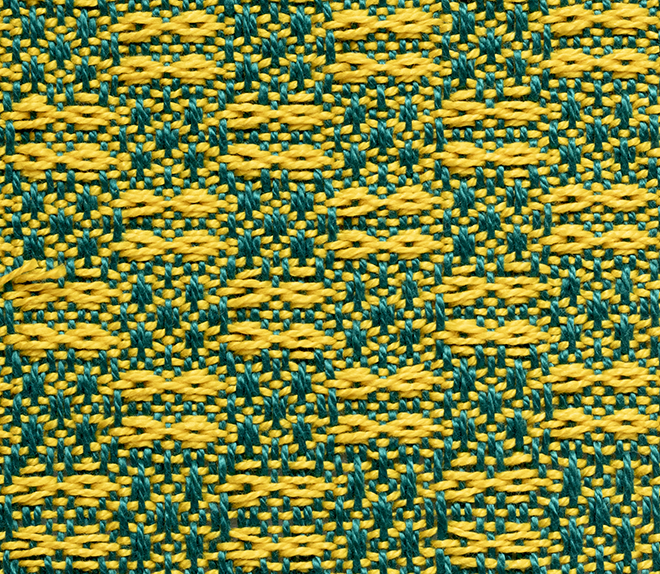 |
I would like to clarify the treadling nomenclature. It you look at the treadling sequence between the original and final drawdowns, it hasn’t changed. But, since the tie-ups have changed, the treadling steps have changed!
I have heard people say: the treadling didn’t change but the tie-up did. What they mean is the treadling sequence didn’t change. Think about weaving on a table loom. The levers that you would engage for the final drawdown are not the same as those you would use for the original one. The terminology is confusing.
To avoid the confusion, I use the terms treadling steps for the combination of which treadle I step on and what shafts are attached to it, and treadling sequence for the numerical list of the steps.
For example, in the drawdown above, the first part of my treadling sequence is: 1, 2, 3, 4.
My treadling is:
1, 5, 6, 7
2, 6, 8
1, 3, 5, 7, 8
4, 6, 7, 8
If I were to give you just the treadling sequence 1, 2, 3, 4, you would have no idea how to weave it. But there would be no ambiguity with the treadling steps listed above.
Next, I tried some more options on the same threading, with a different tie-up. Below is the starting drawdown of an example.
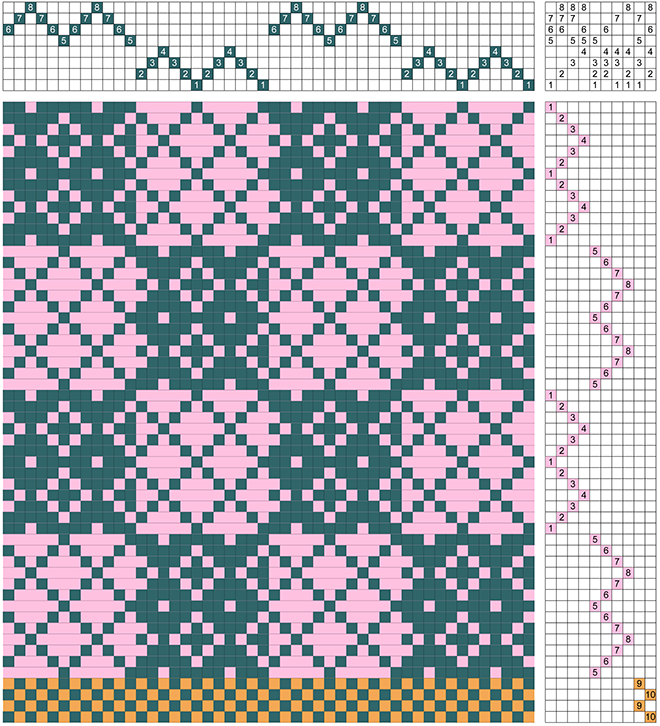
To arrive at the final drawdown, I changed both the tie-up and the treadling sequence, as shown below.

Do you see the difference? To avoid half motifs, I changed the treadling sequence; to obtain symmetry I changed the tie-up. Do you see where?
Below is the front and back of the sample woven from the modified drawdown.
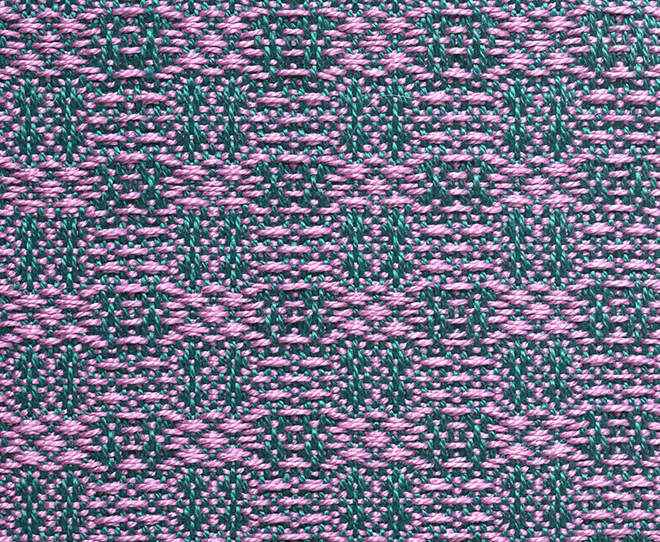 |
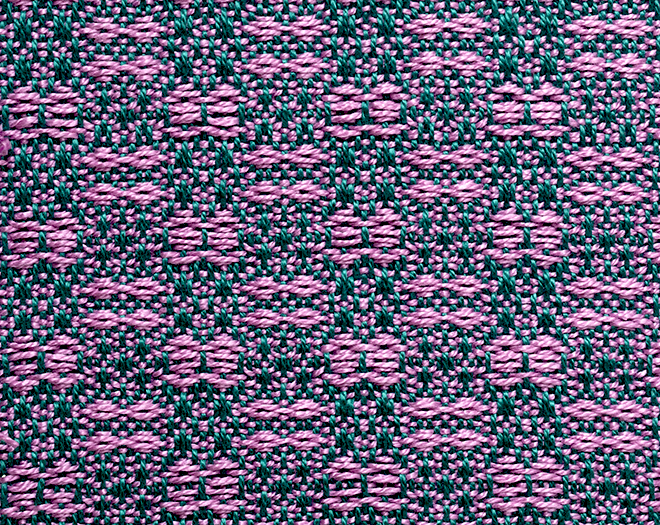 |
Happy Weaving!
Marcy
